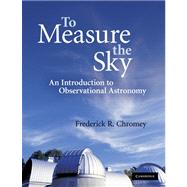
| Preface | p. xi |
| Light | p. 1 |
| The story | p. 1 |
| The evidence: astronomical data | p. 3 |
| Models for the behavior of light | p. 6 |
| Measurements of light rays | p. 13 |
| Spectra | p. 16 |
| Magnitudes | p. 26 |
| Summary | p. 31 |
| Exercises | p. 32 |
| Uncertainty | p. 35 |
| Accuracy and precision | p. 35 |
| Populations and samples | p. 41 |
| Probability distributions | p. 47 |
| Estimating uncertainty | p. 51 |
| Propagation of uncertainty | p. 53 |
| Additional topics | p. 56 |
| Summary | p. 56 |
| Exercises | p. 57 |
| Place, time, and motion | p. 60 |
| Astronomical coordinate systems | p. 61 |
| The third dimension | p. 77 |
| Time | p. 83 |
| Motion | p. 88 |
| Summary | p. 93 |
| Exercises | p. 95 |
| Names, catalogs, and databases | p. 98 |
| Star names | p. 99 |
| Names and catalogs of non-stellar objects outside the Solar System | p. 108 |
| Objects at non-optical wavelengths | p. 112 |
| Atlases and finding charts | p. 112 |
| Websites and other computer resources | p. 114 |
| Solar System objects | p. 114 |
| Summary | p. 116 |
| Exercises | p. 117 |
| Optics for astronomy | p. 118 |
| Principles of geometric optics | p. 118 |
| Lenses, mirrors, and simple optical elements | p. 127 |
| Simple telescopes | p. 135 |
| Image quality: telescopic resolution | p. 137 |
| Aberrations | p. 143 |
| Summary | p. 154 |
| Exercises | p. 155 |
| Astronomical telescopes | p. 157 |
| Telescope mounts and drives | p. 157 |
| Reflecting telescope optics | p. 160 |
| Telescopes in space | p. 168 |
| Ground-based telescopes | p. 175 |
| Adaptive optics | p. 180 |
| The next stage: ELTs and advanced AO | p. 190 |
| Summary | p. 192 |
| Exercises | p. 193 |
| Matter and light | p. 196 |
| Isolated atoms | p. 196 |
| Isolated molecules | p. 204 |
| Solid-state crystals | p. 205 |
| Photoconductors | p. 218 |
| The MOS capacitor | p. 219 |
| The p--n junction | p. 221 |
| The vacuum photoelectric effect | p. 227 |
| Superconductivity | p. 229 |
| Summary | p. 232 |
| Exercises | p. 233 |
| Detectors | p. 235 |
| Detector characterization | p. 236 |
| The CCD | p. 243 |
| Photo-emissive devices | p. 260 |
| Infrared arrays | p. 265 |
| Thermal detectors | p. 269 |
| Summary | p. 272 |
| Exercises | p. 273 |
| Digital images from arrays | p. 275 |
| Arrays | p. 275 |
| Digital image manipulation | p. 281 |
| Preprocessing array data: bias, linearity, dark, flat, and fringe | p. 286 |
| Combining images | p. 297 |
| Digital aperture photometry | p. 309 |
| Summary | p. 320 |
| Exercises | p. 321 |
| Photometry | p. 323 |
| Introduction: a short history | p. 323 |
| The response function | p. 326 |
| The idea of a photometric system | p. 336 |
| Common photometric systems | p. 337 |
| From source to telescope | p. 344 |
| The atmosphere | p. 350 |
| Transformation to a standard system | p. 360 |
| Summary | p. 363 |
| Exercises | p. 364 |
| Spectrometers | p. 368 |
| Dispersive spectrometry | p. 369 |
| Dispersing optical elements | p. 371 |
| Spectrometers without slits | p. 380 |
| Basic slit and fiber spectrometers | p. 382 |
| Spectrometer design for astronomy | p. 385 |
| Spectrometric data | p. 393 |
| Interpreting spectra | p. 399 |
| Summary | p. 402 |
| Exercises | p. 404 |
| Appendices | p. 407 |
| References | p. 437 |
| Index | p. 441 |
| Table of Contents provided by Ingram. All Rights Reserved. |
The New copy of this book will include any supplemental materials advertised. Please check the title of the book to determine if it should include any access cards, study guides, lab manuals, CDs, etc.
The Used, Rental and eBook copies of this book are not guaranteed to include any supplemental materials. Typically, only the book itself is included. This is true even if the title states it includes any access cards, study guides, lab manuals, CDs, etc.